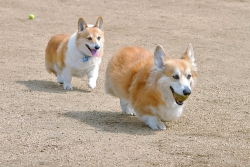In previous articles, the benefits of positive-based training for dogs has been discussed, as well as debunking the myths of the term alpha and the reliance on utilizing a dominance hierarchy when discussing behavior with dogs.
So, how exactly do they learn and process information?
–Classical and operant conditioning
Classical – Pairing something like food (unconditioned reinforcer), praise, toys, clickers (conditioned reinforcers) as a reward for something an owner wants the dog to do.
Operant – Getting the dog to understand that the correct response gets him a reward while an incorrect response moves him further away from the reward. Combined with developing a message that faster, better adherence gets faster, better rewards (two or three treats instead of one), operant conditioning is a vital part of the learning process.
–Dogs are inherently selfish
They know what they want and that’s all they really care about.
Case in point: you get up from sitting on the couch and the dog takes it. The dog is not trying to claim the couch; he just wants to take that nice, cozy, warm spot, since it’s a lot better than a cold, uncomfortable spot on the ground.
So, pet owners can use this attitude to their advantage as that reward they will do anything for becomes very powerful when they make a mistake, since they don’t get it. Thus, the next time, they are typically more willing to offer the correct response, because all they care about is getting their pot of gold at the end of rainbow.
There is no more effective consequence or “discipline” for a dog than removal of what they want. It is infinitely more productive and humanely convincing than using force or scare-based tactics.
–Dogs make decisions based on 4 quadrants
This helps us understand why dogs do what they do. Why do they dig, jump, etc.? Because it’s rewarding to them.
The only way to deal with the rewarding/not-rewarding issues is to make the problem behavior not rewarding, and make an alternate behavior that we deem acceptable, more rewarding. For example, ignoring jumping, instead of pushing them down is an effective consequence. Getting them to understand that sitting is more rewarding is even better.
|
|

